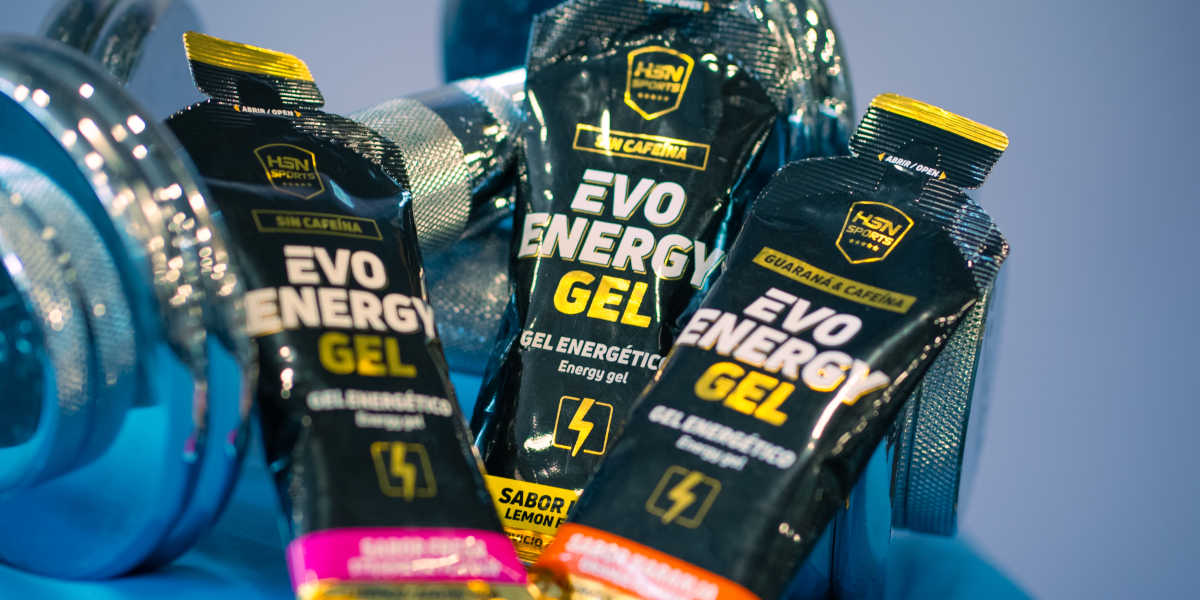Home>Misc>Featured>How Does High Intensity Interval Training Boost Slow Metabolism


Featured
How Does High Intensity Interval Training Boost Slow Metabolism
Modified: January 2, 2024
Discover how high intensity interval training (HIIT) can rev up your slow metabolism. Featured workouts and tips to boost your calorie burn and achieve your weight loss goals.
Introduction
Welcome to the world of fitness, where every individual strives to have a healthy and efficient metabolism. But what happens when your metabolism seems to be running at a slower pace than you’d like? Don’t worry, you’re not alone. Many people struggle with a sluggish metabolism, which can make weight loss and maintaining a healthy body weight more challenging.
If you’re looking for a way to give your metabolism a powerful boost, you might want to consider incorporating High Intensity Interval Training (HIIT) into your workout routine. HIIT has gained immense popularity in recent years for its ability to torch calories and improve overall fitness in a short amount of time. But did you know that it can also be a game-changer for those with a slow metabolism?
In this article, we will delve into the science behind slow metabolism, explore what exactly HIIT is, and understand how this form of exercise can rev up your metabolic rate. We will also discuss the numerous benefits of HIIT for individuals with a slow metabolism and provide practical tips on how to incorporate it into your fitness routine for optimal results.
So, if you’re ready to kickstart your metabolism and achieve your fitness goals, grab your workout gear and let’s dive into the world of HIIT!
Understanding Slow Metabolism
Before we explore how HIIT can boost a slow metabolism, it’s important to understand what exactly a slow metabolism is. Metabolism refers to the chemical processes that occur within our bodies to maintain life. It involves the conversion of food and drinks into energy that is utilized by our cells for various functions such as breathing, digestion, and movement.
Unfortunately, not everyone has a naturally fast metabolism. There are several factors that can contribute to a slow metabolism, including genetics, age, muscle mass, and hormonal imbalances. When you have a slow metabolism, your body becomes less efficient at burning calories, leading to weight gain and difficulty in losing excess weight.
One common misconception is that people with slow metabolism are doomed to be overweight. While it may be more challenging, it is definitely possible to boost a slow metabolism and achieve your desired weight and fitness level.
So, how does HIIT play a role in this?
HIIT can be a game-changer for individuals with a slow metabolism. This form of exercise involves short bursts of intense activity followed by brief recovery periods. The high-intensity intervals push your body to its limits, stimulating various physiological responses that can have a significant impact on your metabolism.
During a HIIT workout, your body experiences what’s known as the “afterburn effect” or excess post-exercise oxygen consumption (EPOC). This means that your metabolism stays elevated even after you’ve finished exercising. The intense nature of HIIT causes a greater oxygen demand, which leads to an increased metabolic rate for hours after the workout. The result? You continue to burn calories at a higher rate throughout the day, even when you’re at rest.
In addition to the afterburn effect, HIIT also helps to build lean muscle mass. Muscle tissue is highly metabolically active, meaning it burns more calories at rest compared to fat tissue. By incorporating HIIT into your routine, you can increase your muscle mass and boost your resting metabolic rate, helping you to burn more calories even when you’re not actively exercising.
Now that we understand the basics of a slow metabolism and the positive impacts of HIIT, let’s explore the specific benefits that this form of exercise can offer for individuals with a slow metabolism.
What is High Intensity Interval Training (HIIT)?
High Intensity Interval Training, commonly known as HIIT, is a workout method that involves short bursts of intense exercise followed by short periods of rest or low-intensity activity. This form of training is designed to maximize calorie burn, improve cardiovascular fitness, and increase muscular strength.
HIIT workouts are typically structured in a variety of formats, including bodyweight exercises, cardio exercises, and even weightlifting. The key component of HIIT is the intensity at which the exercises are performed. The high-intensity intervals are typically done at maximum effort, pushing your body to its limits.
The duration of HIIT workouts can vary, but they are generally shorter than traditional steady-state cardio workouts. A typical HIIT session may last anywhere from 10 to 30 minutes, depending on the intensity and the specific workout routine.
One of the standout features of HIIT is its ability to elicit a significant cardiovascular response in a short amount of time. The intensity of the workout elevates your heart rate rapidly and challenges your cardiovascular system, resulting in improved cardiovascular endurance and the potential for greater fat burning.
In addition to the cardiovascular benefits, HIIT also provides an efficient and effective way to build strength and improve muscle tone. The explosive movements and resistance exercises incorporated in HIIT workouts engage multiple muscle groups, helping to increase overall strength and improve muscle definition.
Moreover, HIIT has been shown to be an effective tool for weight loss. The combination of high-intensity exercise and the elevated metabolic rate post-workout can lead to increased caloric expenditure, promoting fat loss and weight management.
Perhaps one of the greatest advantages of HIIT is its versatility and adaptability. HIIT workouts can be modified to suit different fitness levels and goals, making it accessible to individuals of all abilities. Whether you’re a beginner or a seasoned athlete, you can tailor HIIT workouts to match your fitness level and gradually increase the intensity as you progress.
Now that we have a clear understanding of what HIIT is, let’s explore how this form of training specifically helps boost a slow metabolism.
How Does HIIT Boost Metabolism?
High Intensity Interval Training (HIIT) has been shown to have a profound impact on boosting metabolism. But how exactly does it achieve this? Let’s explore the mechanisms behind HIIT’s metabolic benefits.
One of the key ways that HIIT boosts metabolism is through the afterburn effect, also known as excess post-exercise oxygen consumption (EPOC). During a HIIT workout, your body experiences a significant oxygen deficit, which creates an oxygen debt that needs to be repaid. This means that your body continues to burn calories at an elevated rate even after the workout has ended.
The afterburn effect occurs because of the intense nature of HIIT and the demand it places on your body’s energy systems. After a HIIT workout, your body needs to restore depleted oxygen levels, repair muscle tissue, and replenish energy stores. This process requires calories, resulting in an increased metabolic rate for several hours post-workout.
Furthermore, HIIT is known to stimulate the production of human growth hormone (HGH), which plays a significant role in metabolism. HGH helps to increase muscle mass, reduce body fat, and enhance overall metabolic function. By incorporating HIIT into your routine, you can promote the release of HGH, leading to an improved metabolic rate and greater calorie burn.
In addition to these direct metabolic effects, HIIT also has a positive impact on insulin sensitivity. Insulin is a hormone that regulates blood sugar levels and plays a crucial role in metabolism. In individuals with insulin resistance or poor insulin sensitivity, their bodies struggle to effectively process glucose and utilize it for energy. This can lead to weight gain and an increased risk of developing chronic diseases such as type 2 diabetes. However, studies have shown that HIIT can help improve insulin sensitivity, allowing the body to better regulate blood sugar levels and utilize glucose efficiently.
Last but not least, HIIT can help increase lean muscle mass, which contributes to a higher resting metabolic rate. Muscle tissue requires more energy to maintain compared to fat tissue, so the more muscle you have, the more calories you burn at rest. HIIT workouts incorporate resistance exercises, which help to stimulate muscle growth and increase overall muscle mass. This, in turn, boosts your basal metabolic rate (BMR), allowing you to burn more calories throughout the day even when you’re not exercising.
By combining the effects of the afterburn effect, increased HGH production, improved insulin sensitivity, and increased muscle mass, HIIT provides a powerful and multi-faceted approach to boosting metabolism and achieving weight loss and fitness goals.
Now that we’ve explored how HIIT boosts metabolism, let’s dive into the numerous benefits that this form of training offers for individuals with a slow metabolism.
Benefits of HIIT for Slow Metabolism
High Intensity Interval Training (HIIT) offers a variety of benefits for individuals with a slow metabolism. Let’s take a closer look at how HIIT can be particularly advantageous for those seeking to boost their metabolism.
1. Increased Caloric Expenditure: HIIT workouts are known for their ability to burn a significant number of calories in a short amount of time. This increased calorie burn comes from the intense nature of the exercises and the high oxygen demand placed on the body. For individuals with a slow metabolism, HIIT provides a way to ramp up calorie expenditure and promote weight loss.
2. Enhanced Fat Burning: HIIT has been shown to effectively target visceral fat, which is the stubborn fat stored around the abdominal organs. Visceral fat is associated with an increased risk of metabolic disorders, such as insulin resistance and heart disease. By engaging in HIIT workouts, individuals with a slow metabolism can specifically target and burn this stubborn fat, leading to a healthier body composition.
3. Improved Cardiovascular Fitness: HIIT workouts challenge the cardiovascular system by rapidly elevating heart rate. This increased demand strengthens the heart and improves cardiovascular endurance. For individuals with a slow metabolism, HIIT can be an excellent tool to enhance cardiovascular health and boost overall fitness levels.
4. Time Efficiency: One of the main advantages of HIIT is its time efficiency. Traditional steady-state cardio workouts can be time-consuming, especially for individuals with busy schedules. HIIT allows individuals to get an effective workout in a shorter amount of time. For those with a slow metabolism, who may need to put in extra effort to see results, HIIT provides a time-efficient solution to burn calories and improve metabolic rate.
5. Preservation of Lean Muscle Mass: Slow metabolism is often associated with muscle loss. However, by incorporating HIIT into your routine, you can help preserve and build lean muscle mass. The resistance exercises involved in HIIT workouts stimulate muscle growth, which in turn increases resting metabolic rate. This means that even at rest, you’ll be burning more calories, helping to counteract potential muscle loss and maintain a healthy metabolism.
6. Boost in Energy Levels: Individuals with a slow metabolism may often feel fatigued and lacking in energy. HIIT can help combat this by boosting energy levels and improving overall stamina. The intense nature of HIIT workouts stimulates the release of endorphins and promotes blood flow, resulting in a natural energy boost that can carry over into daily life.
7. Flexibility and Adaptability: HIIT workouts can be customized to suit individual fitness levels and preferences. This allows individuals with a slow metabolism to gradually increase intensity and challenge themselves as they progress. Whether performed at the gym, at home, or outdoors, HIIT workouts can be tailored to fit into any lifestyle.
By incorporating HIIT into their fitness routine, individuals with a slow metabolism can experience a range of benefits, including increased calorie burn, improved fat loss, enhanced cardiovascular fitness, preservation of lean muscle mass, and a boost in energy levels. Now that we’ve explored the benefits, let’s discuss how to incorporate HIIT into your workout routine.
How to Incorporate HIIT into Your Workout Routine
If you’re looking to incorporate High Intensity Interval Training (HIIT) into your workout routine, here are some practical tips to help you get started:
1. Start Slow and Progress Gradually: If you’re new to HIIT or have a slow metabolism, it’s essential to start slowly and gradually increase the intensity and duration of your workouts. Begin with shorter intervals and longer recovery periods, and as your fitness level improves, you can gradually increase the intensity by shortening the rest periods and lengthening the work intervals.
2. Choose Compound Exercises: Incorporate compound exercises that target multiple muscle groups into your HIIT routine. Exercises like squats, lunges, push-ups, and burpees engage multiple muscle groups, maximizing calorie burn and overall muscle activation.
3. Create a Balanced Workout: Ensure that your HIIT routine includes a mix of cardio exercises and strength training. This combination helps to improve cardiovascular fitness, build lean muscle mass, and enhance overall metabolic function. Incorporate exercises like jump rope, mountain climbers, kettlebell swings, and dumbbell exercises to add versatility to your routine.
4. Mix Up the Intensity: Vary the intensity levels within each interval to keep your body challenged. For instance, alternate between sprints at maximum effort and periods of moderate intensity. This variation helps to increase calorie burn, improve endurance, and prevent plateauing.
5. Schedule Regular Rest Days: Rest and recovery are crucial for allowing your body to repair and grow stronger. Make sure to schedule regular rest days in between your HIIT workouts to avoid overtraining and reduce the risk of injury. Use these rest days to focus on low-intensity activities like yoga, stretching, or light cardio.
6. Incorporate HIIT in Different Settings: HIIT can be done virtually anywhere, making it a convenient form of exercise. You can incorporate HIIT into your gym workouts, outdoor activities, or even home workouts. There are plenty of online resources and apps that provide guided HIIT workouts if you prefer to follow along with a structured routine.
7. Listen to Your Body: Pay attention to your body’s signals and adjust your HIIT workouts accordingly. If you feel overly fatigued or experience any pain or discomfort, take a step back and modify your routine. It’s essential to find the right balance between pushing yourself and preventing injury.
Remember, consistency is key when it comes to reaping the benefits of HIIT. Aim for at least two to three sessions of HIIT per week to allow your body enough time for recovery and adaptation. As you progress, you can gradually increase the frequency and intensity of your workouts.
By following these guidelines and tailoring your HIIT routine to your fitness level and goals, you can effectively incorporate HIIT into your workout routine and experience the metabolic boosting benefits it offers.
Precautions and Safety Considerations
While High Intensity Interval Training (HIIT) can be a highly effective workout method for boosting metabolism, it’s important to prioritize safety and take certain precautions to avoid injury. Here are some key considerations to keep in mind when incorporating HIIT into your workout routine:
1. Warm-Up Adequately: Always start your HIIT workout with a proper warm-up session. This should include dynamic stretches and low-intensity exercises to prepare your muscles and joints for the high-intensity movements ahead. A warm-up helps to increase blood flow, improve flexibility, and reduce the risk of injury.
2. Find Your Optimal Intensity: While HIIT is known for its intensity, it’s crucial to listen to your body and work at a level that is challenging but manageable for you. Pushing yourself too hard or attempting exercises beyond your current fitness level can increase the risk of strains, sprains, or other injuries. Gradually increase the intensity over time as your fitness improves.
3. Use Proper Form: Pay close attention to your form during each HIIT exercise. Performing movements with incorrect form can lead to muscle imbalances and injuries. If you’re unsure about the proper form for an exercise, seek guidance from a fitness professional or refer to instructional videos to ensure you’re maintaining proper alignment and technique.
4. Rest and Recovery: Allow ample time for rest and recovery between HIIT workouts. Overtraining can increase the risk of overuse injuries, fatigue, and hinder your progress. Make sure to schedule rest days and incorporate active recovery activities like light stretching or gentle yoga to promote muscle repair and reduce muscle soreness.
5. Modify and Progress Safely: HIIT workouts can be modified to suit different fitness levels and abilities. If you’re new to HIIT or have specific limitations or injuries, consider working with a qualified fitness professional who can help you tailor the exercises to your needs. Gradually progress the intensity and duration of each interval, taking time to build strength and endurance safely.
6. Stay Hydrated: Hydration is essential during any workout, including HIIT. Make sure to drink water before, during, and after your workout to stay properly hydrated. Dehydration can decrease performance and increase the risk of muscle cramps and fatigue.
7. Listen to Your Body: Your body is the best indicator of what it can handle. If you experience any unusual pain, discomfort, or fatigue during a HIIT workout, stop immediately and assess the situation. It’s better to take a break or modify an exercise than risk injury or further strain.
Remember, it’s important to consult with a healthcare professional before starting any new exercise program, especially if you have any underlying health conditions or concerns.
By following these precautions and safety considerations, you can minimize the risk of injury and enjoy the benefits of HIIT while maintaining a safe and effective workout routine.
Conclusion
High Intensity Interval Training (HIIT) is a powerful tool for boosting a slow metabolism and achieving your fitness goals. By incorporating HIIT into your workout routine, you can increase calorie burn, improve cardiovascular fitness, build lean muscle mass, and enhance overall metabolic function.
Understanding the science behind a slow metabolism and how HIIT can help rev it up is crucial in designing an effective fitness plan. HIIT’s ability to stimulate the afterburn effect, increase human growth hormone production, improve insulin sensitivity, and promote muscle growth all contribute to its metabolic boosting benefits.
Not only does HIIT offer metabolic advantages, but it also provides a time-efficient approach to exercise. With shorter workouts and the ability to adjust intensity levels, HIIT fits into any busy schedule and can be adapted to individual fitness levels and goals.
However, it’s important to approach HIIT with caution and take necessary precautions to ensure safety and prevent injuries. Warming up properly, using correct form, resting and recovering adequately, and listening to your body are all essential aspects of incorporating HIIT into your routine without compromising your well-being.
Whether you have a slow metabolism or simply want to take your fitness to the next level, HIIT can be a game-changer. Its ability to increase calorie burn, promote fat loss, improve cardiovascular fitness, preserve lean muscle mass, and boost energy levels make it a valuable addition to any fitness regimen.
Remember, consistency and gradual progression are key when incorporating HIIT into your routine. Start slow, gradually increase intensity, and listen to your body as you progress. With commitment and patience, you can reap the numerous benefits that HIIT has to offer.
So, lace up your sneakers, find a HIIT workout that suits you, and prepare to transform your metabolism and achieve your fitness goals through the power of High Intensity Interval Training.









